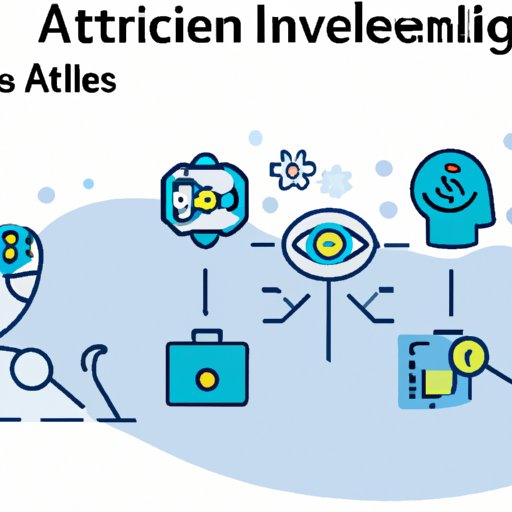Introduction
Artificial intelligence (AI) is a rapidly evolving technology that has the potential to revolutionize how businesses operate. By leveraging AI-driven algorithms, businesses can automate and optimize processes, improve accuracy, reduce costs, and gain a competitive edge in their respective markets. But, before taking advantage of the opportunities offered by AI, it is important to understand the challenges associated with working with this technology as well as the best practices for incorporating it into existing systems.

Challenges of Working with AI
Working with AI can present a number of technical and human challenges. On the technical side, the complexity of machine learning algorithms and the need for large datasets can be daunting for those without a background in computer science or data science. Additionally, AI models often require significant computing power which may not be available in-house or easily acquired from cloud providers. Finally, there is the challenge of keeping up with the ever-changing AI landscape. As new tools and technologies become available, businesses must stay up-to-date on the latest developments to ensure they are taking full advantage of the opportunities presented by AI.
On the human side, there are concerns about the potential for AI to replace human jobs. This can lead to resistance from employees who fear their positions are at risk. Additionally, many people lack the knowledge and skills needed to effectively collaborate with AI, which can further impede adoption. To overcome these challenges, businesses should focus on educating and empowering their workforce to use AI responsibly and ethically.

Benefits of Incorporating AI into Business Operations
Despite the challenges, there are numerous ways in which AI can benefit businesses. By automating mundane tasks such as data entry and customer service, AI can free up time for employees to focus on more complex and value-adding activities. This can lead to increased efficiency and productivity, ultimately resulting in cost savings. Additionally, AI can be used to improve accuracy in decision-making and forecasting, enabling businesses to make better decisions faster.
According to a study by McKinsey & Company, “AI technologies have the potential to create $13 trillion of economic value by 2030 across nine business functions, including marketing and sales, manufacturing and supply chain, and customer service.” This suggests that businesses that incorporate AI into their operations now will be well-positioned to take advantage of the opportunities presented by this technology in the future.

Designing Workflows that Incorporate AI
When designing workflows that incorporate AI, it is important to identify the need for AI, define goals and objectives, establish clear metrics, and choose the right AI platform. First, businesses should consider what tasks would benefit from automation and determine if the potential gains justify the costs of implementing an AI solution. Once the need for AI has been established, goals and objectives should be set to ensure the project is properly scoped and the expected outcomes are clearly defined. Establishing metrics to measure success is also key to ensuring the project stays on track and delivers the desired results.
Finally, businesses should select an AI platform that meets their needs. There are a variety of AI platforms available, ranging from low-cost open-source solutions to enterprise-level offerings. When selecting a platform, businesses should consider the scale of their project, the type of data they will be working with, and the level of support they need.
Examples of Successful AI Projects
There are numerous examples of successful AI projects that have had a positive impact on businesses. Automation of administrative tasks such as invoice processing and customer onboarding is one area where AI has proven to be particularly useful. Additionally, facial recognition technology has enabled businesses to improve security and streamline access control. Finally, chatbot development has enabled businesses to provide 24/7 customer service with minimal effort.
Tips for Integrating AI into Existing Systems
To maximize the potential gains of using AI, businesses should leverage existing resources, create a plan for data collection, and test, evaluate, and monitor performance. Leveraging existing resources such as databases and analytics tools can help businesses get up and running quickly and efficiently. Additionally, businesses should create a plan for collecting the data they need to train and test their AI models. Finally, it is important to test, evaluate, and monitor performance to ensure the system is working as intended and any changes made have the desired effect.
Conclusion
In conclusion, working with AI presents both technical and human challenges. However, when leveraged correctly, AI can offer numerous benefits, including increased efficiency, reduced costs, and improved accuracy. By designing workflows that incorporate AI, businesses can take advantage of these benefits and position themselves to capitalize on the opportunities presented by this technology. Examples of successful AI projects include automation of administrative tasks, facial recognition technology, and chatbot development. Finally, businesses should leverage existing resources, create a plan for data collection, and test, evaluate, and monitor performance to ensure they are getting the most out of their AI solutions.
(Note: Is this article not meeting your expectations? Do you have knowledge or insights to share? Unlock new opportunities and expand your reach by joining our authors team. Click Registration to join us and share your expertise with our readers.)
